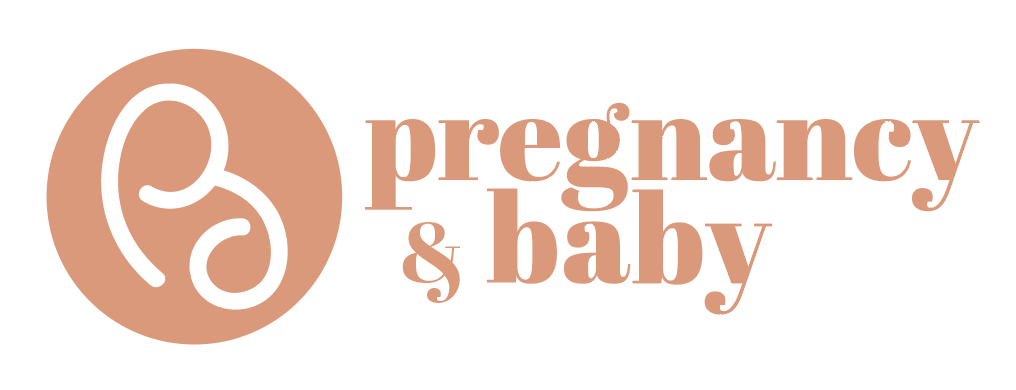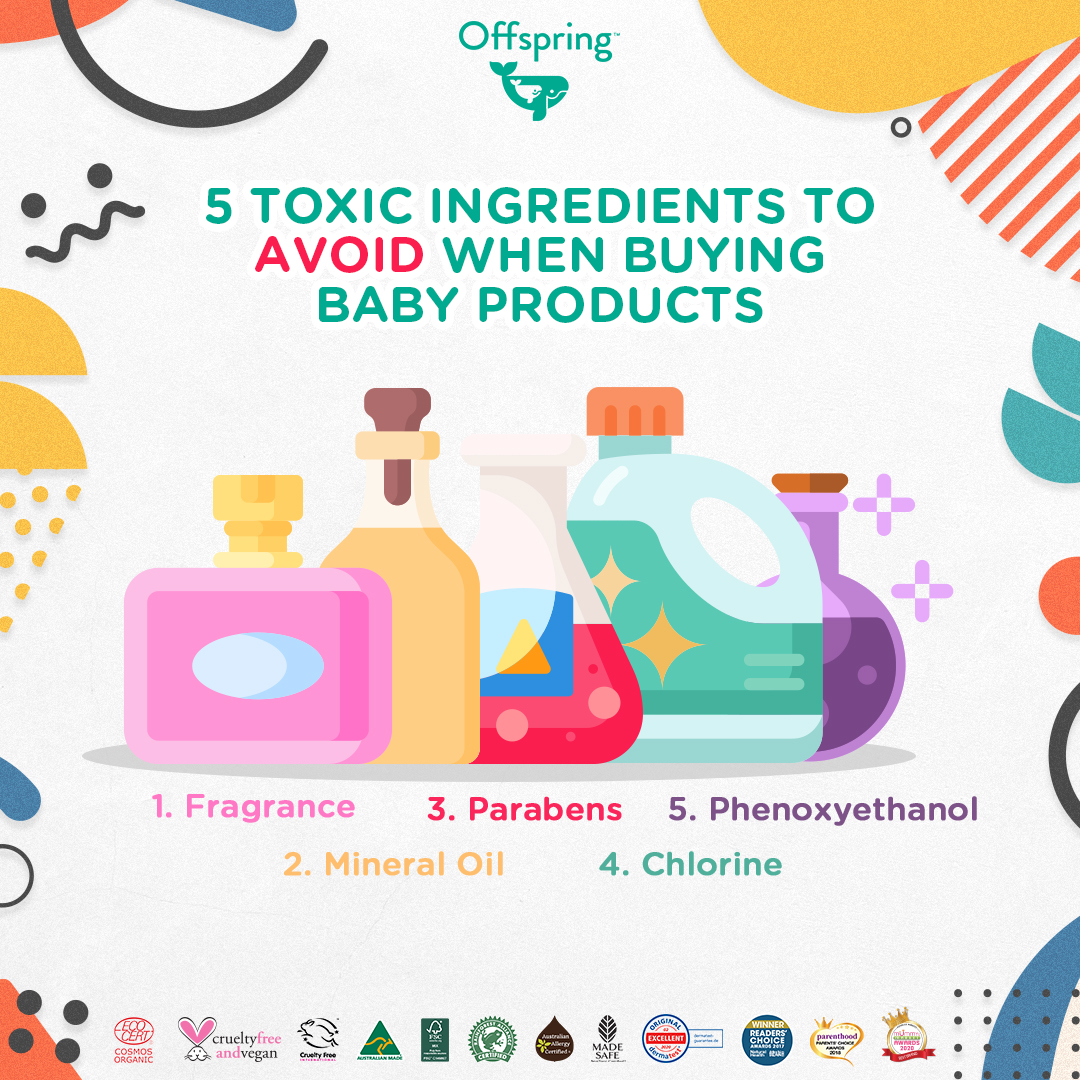
Learn about the health risks associated with these 5 harmful chemicals and how to avoid them by choosing safe and natural alternatives.
Did you know that babies may be exposed to over 25 dangerous chemicals a day through conventional baby products? Exposure to these toxic ingredients are linked to a staggering number of health issues like allergies and respiratory problems. Babies are especially vulnerable as their skin is ten times thinner than an adult’s and are less resistant to allergens. Reduce your baby’s exposure to these harmful chemicals by simply checking the label to avoid these five toxic ingredients.
#1: Fragrance
Also labelled as: parfum
Fragrance is commonly added to baby products to make them smell great, but it is one of the leading causes of allergy and irritation in babies. A single fragrance is created from a cocktail of more than 100 chemicals, so the next time you’re reaching for a lavender-scented baby product, think about the numerous synthetic chemicals that you are applying onto your baby’s skin. Fragrance can also be lurking in everyday household products such as aroma essences for air purifiers or dishwashing liquid.
#2: Mineral Oil
Also labelled as: petroleum, paraffin, liquid paraffin
While mineral oil may sound naturally moisturizing, it is a cheap petroleum by-product used in diaper creams, baby wipes and baby oil due to its lubricating nature. However, mineral oil tends to coat the skin and inhibits the pores from breathing.
#3: Parabens
Also labelled as: ethylparaben, butylparaben, methylparaben, propylparaben
Parabens are widely used as preservatives to extend a product’s shelf life, but it is also a neurotoxin that disrupts hormone function in the body. Babies are especially susceptible due to their developing endocrine system, and prolonged exposure to parabens may cause developmental issues associated with learning and memory.
#4: Phenoxyethanol
This ingredient often claims to be the ‘natural’ alternative to paraben and is commonly found in baby wipes or a hidden fragrance ingredient but is known to trigger skin irritation in babies. Manufacturers also tend to use the word ‘natural’ loosely, as products need to contain only 1% of natural ingredients to be labelled natural, even if the remaining 99% is derived from synthetic chemicals. When buying baby products, it is safer to buy products labelled with world-recognised organic certifications such as Ecocert Cosmos which guarantees 95% of ingredients are naturally derived and a high percentage of these ingredients are organic.
#5: Chlorine
Chlorine is commonly used as a bleach to whiten disposable baby diapers and contains small traces of a toxic chemical called dioxins which has the potential to interfere with the development of your baby’s immune and organ systems. While manufacturers claim that only trace amounts of dioxins are present in diapers, this chemical does not break down easily and can stay in the body for a long time.
Choosing the Best for Your Baby and Your Family
Avoid exposing your baby’s delicate skin to all these nasty ingredients with Offspring’s Baby Essential range of diapers, baby wipes and baby essentials that contain up to 95% organic ingredients and are certified toxic-free. This Australian brand is committed to creating the safest, most natural and nurturing products for the whole family.
To eliminate any exposure to harmful dioxins in chlorine, Offspring’s Featherlite Ultra-Thin diaper is formulated to be chlorine-free to protect your baby’s sensitive bottom.
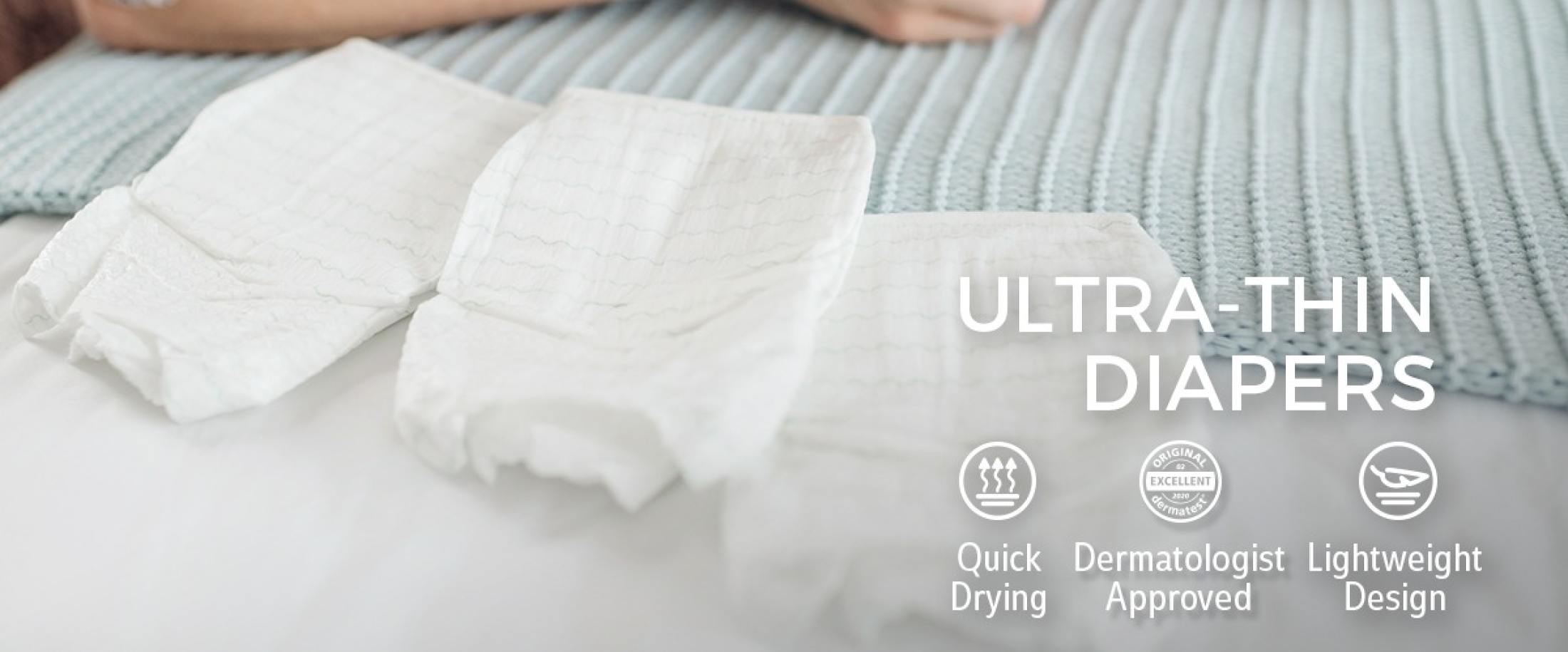
For a fabulously fashionable alternative, Offspring features an award-winning Fashion Diaper range with skin-safe designer prints. Choose from a variety of exclusive designs to let your little ones go pants-free!
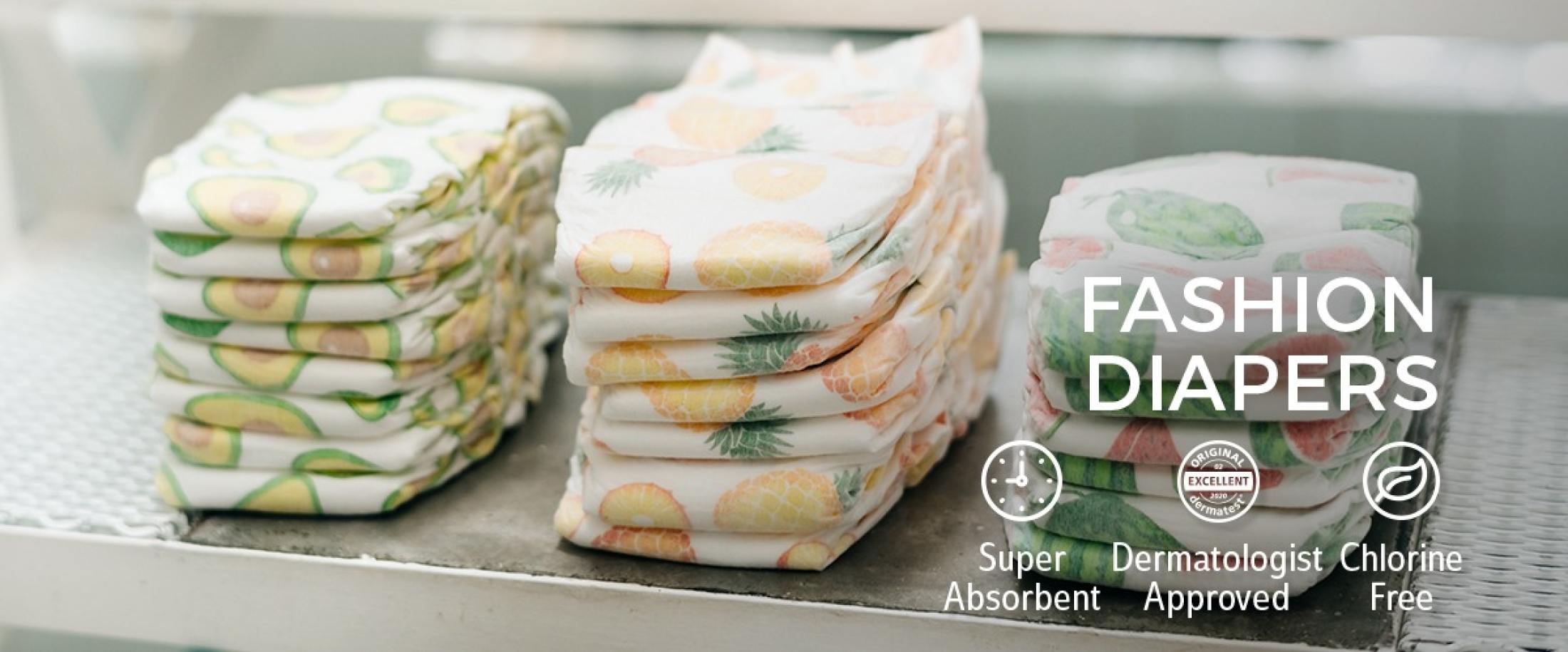
Wipe away messes and worries with Offspring’s hypoallergenic plant-based baby wipes for soft and gentle cleansing. These wipes are 100% biodegradable and are kind to both your baby’s skin and Mother Nature.
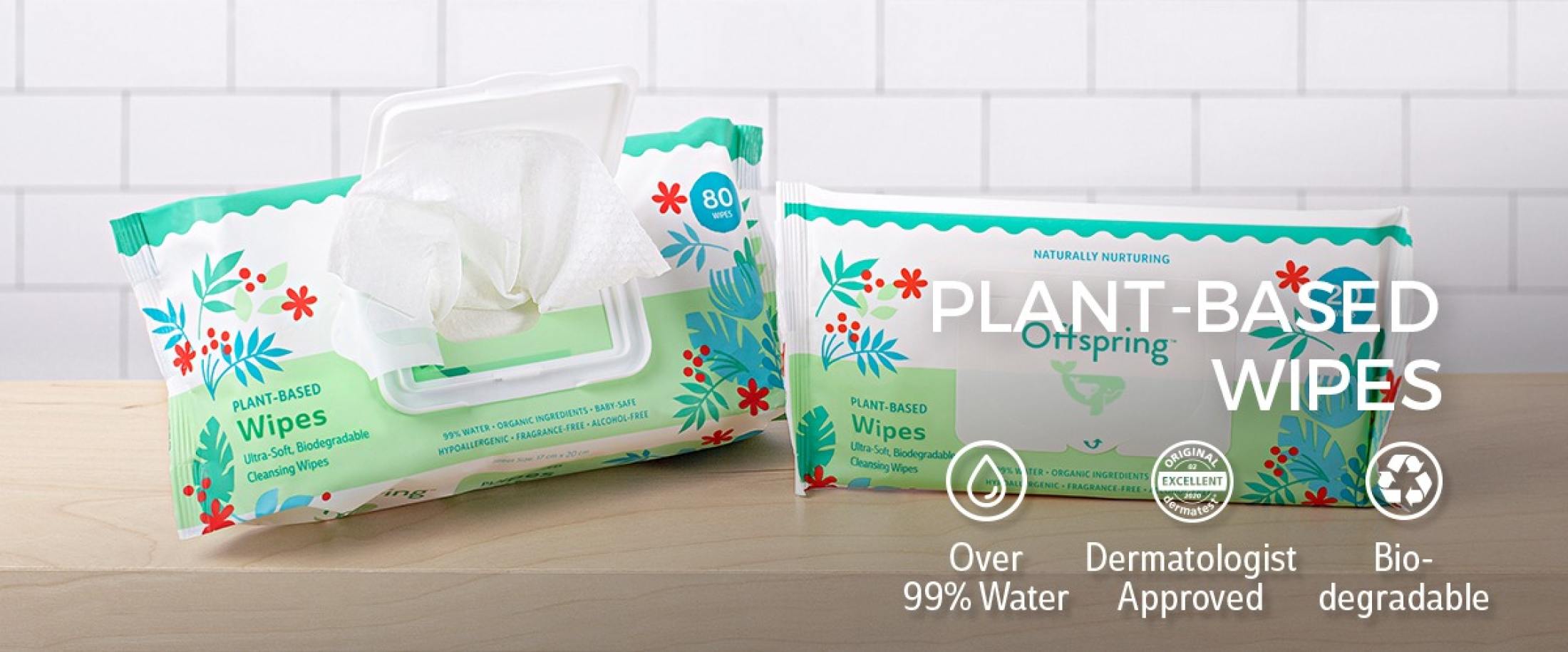
To keep your little ones clean and comfortable, their baby essentials range features a series of all-natural bath and skincare suitable for your baby’s sensitive skin.
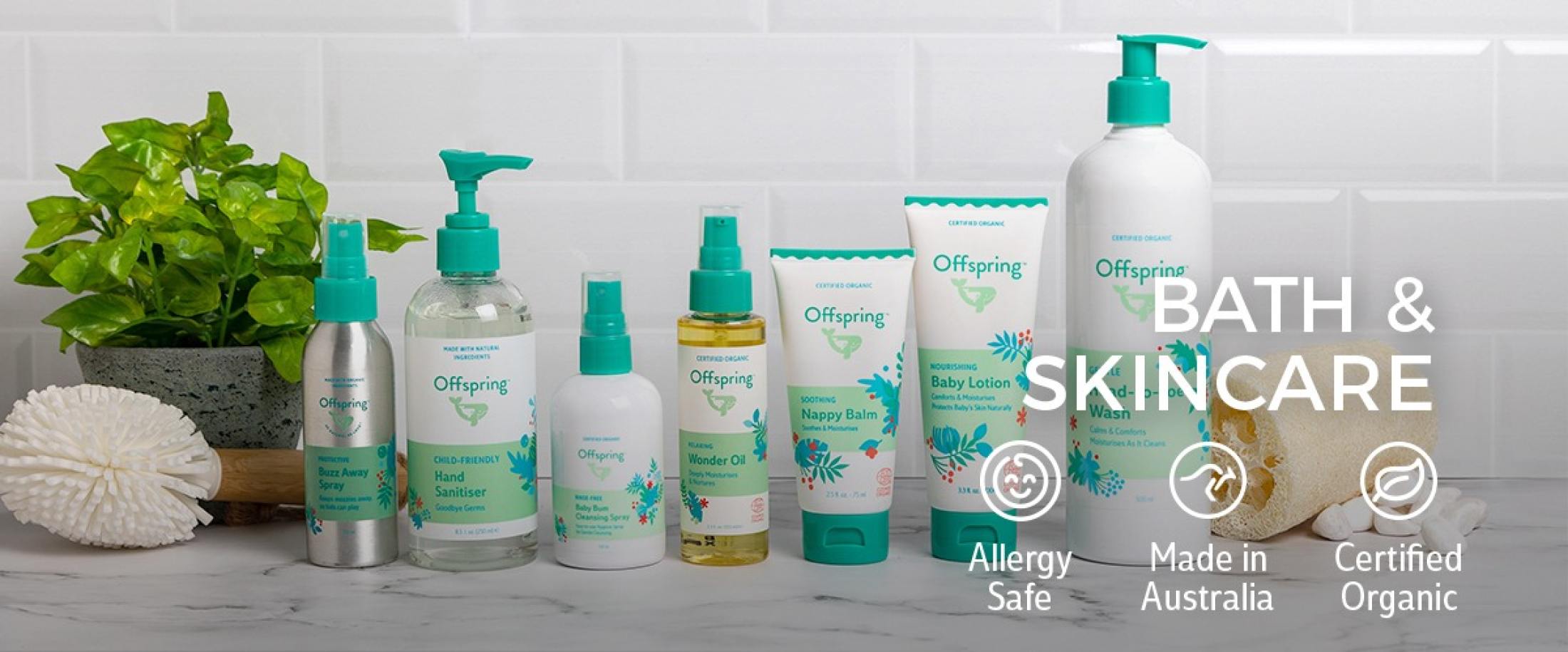
This versatile brand also features a baby-safe household series with a plant-based formulation for a cleaner and greener home.
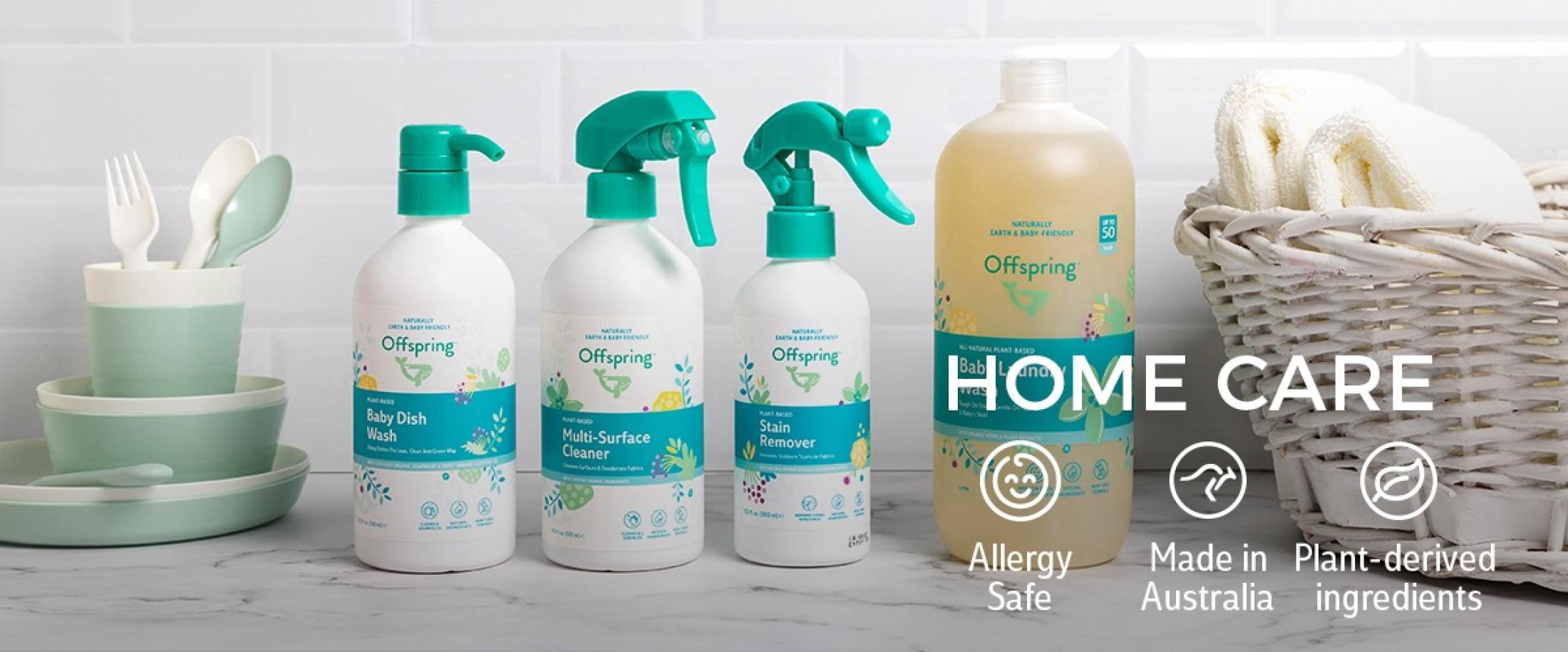
Offspring’s Promise – Certified Beyond Certainty
The Offspring Baby Essential range is one of the few baby care brands to receive certified organic accreditation by Ecocert Cosmos, which guarantees their products are formulated with a minimum of 95% natural ingredients with the rest consisting of Ecocert-approved ingredients. Offspring’s range of family-friendly and earth-conscious products are manufactured in Australia and each product has received two or more of these 9 accreditations.

Offspring’s range of diapers and wipes also carry the Dermatest seal, which certifies that their products do not lead to toxic-irritative tolerance reaction in patch testing carried out in accordance with international guidelines and is free from skin allergens and reactor and has been specially formulated to be suitable for your baby’s delicate skin.

Discover the Offspring baby essential range here.
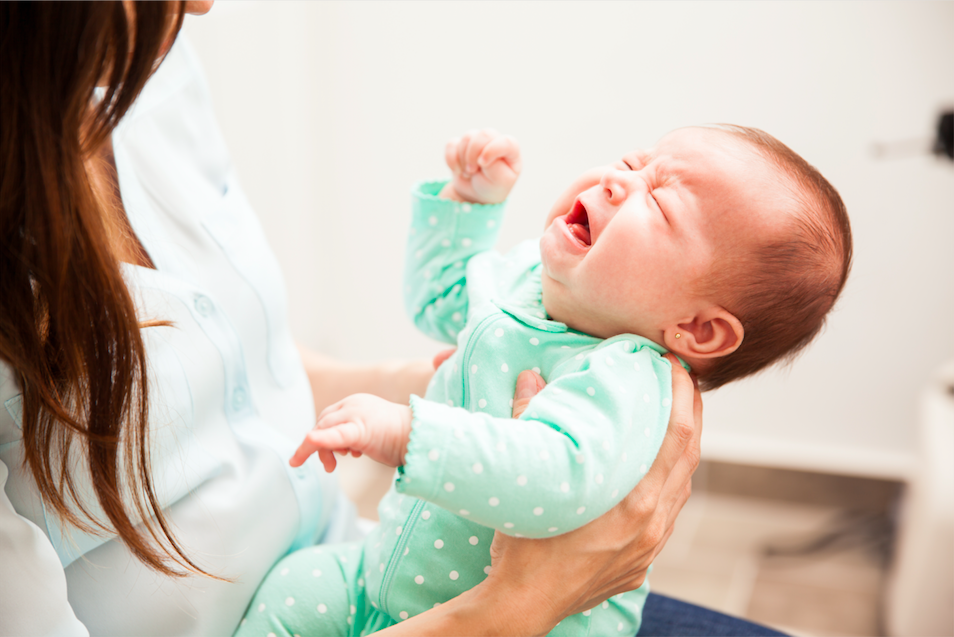
What is Colic?
During the first few weeks of bringing your baby home, your baby may suddenly burst into a distressing cry that goes on for hours for no apparent reason. Is this excessive crying accompanied by clenched fists and a reddened face? And does it seem impossible to soothe your crying baby? Then you might be dealing with colic.
Colic is a common condition that causes a healthy baby to cry for hours for no apparent reason, even after feeding, changing or soothing. This excessive crying is not an indication of any health issues, and colic neither harmful nor dangerous to your baby.
Normal Crying vs. Colic
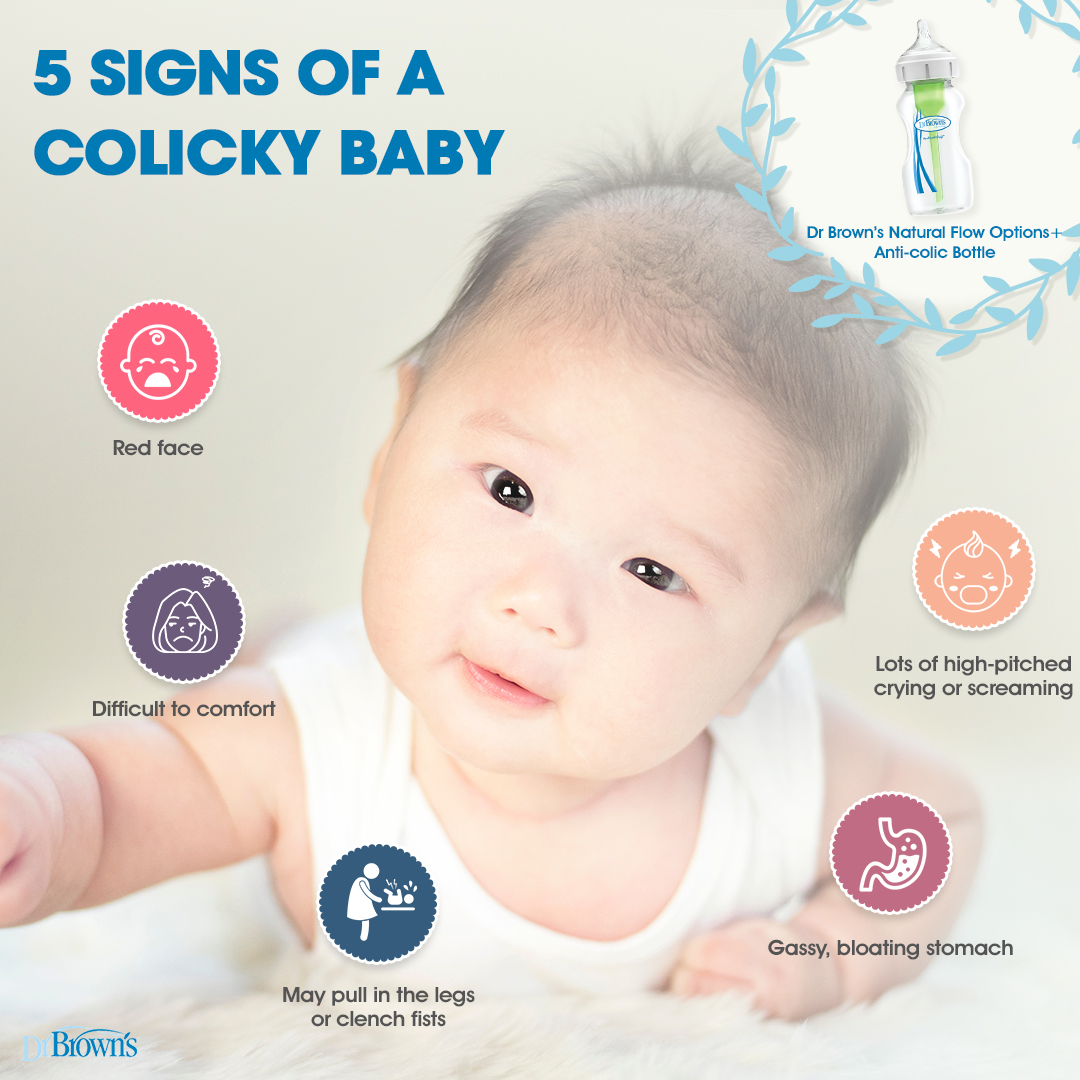
While crying may indicate many things, this distressing pattern of excessive crying is easily identified by the rule of 3 pattern - crying for more than 3 hours a day, at least 3 days a week for more than 3 weeks. It usually occurs at the same time of the day, often in the early evening.
Unlike normal crying, colicky babies often appear distressed or in pain, and it is very difficult to soothe them. You may also notice the following signs:
What Causes Colic?
While it may be distressing to hear your baby cry for an extended period of time, colic is very common and affects up to 30% of infants during the first few months of birth. In most cases, colic comes and goes away on its own with no ill effect on your baby. Even today, there are no known causes of colic. However, some experts have theorised that colicky behaviour could arise from overstimulation of a baby’s senses, digestion problems or even food allergies.
The first step in dealing with colic is to rule out other possible causes of discomfort. If you notice any of the following symptoms accompanying your baby’s intense crying, call your doctor right away.
For peace of mind, you can also schedule a paediatrician visit for the doctor to examine your baby and determine that you are indeed dealing with colic. Use this opportunity to discuss possible coping strategies or remedies to manage your colicky baby.
How To Effectively Treat Colic?
Since nobody knows the exact cause of colic, the only remedy is to try and comfort your baby until the colic has passed. The good news is that most babies outgrow colic by the time they are 3 to 4 months old. Here are some soothing strategies that you can try.
Try the ‘Colic Carry’
This method may help relieve gas and stomach discomfort for your little ones. Lay your baby face-down with her tummy on your forearm and cradle the head using your hand. Gently rub your baby’s back a few times and the light pressure on the tummy may help relieve uncomfortable gas.
Soothe with Sound and Motion
You can soothe a crying baby with rhythmic noises from a white noise machine, as it reminds them of the womb. Babies also tend to be comforted by their mother’s voice, so try repeating words like ‘shh’ or ‘ahh’ to calm your baby.
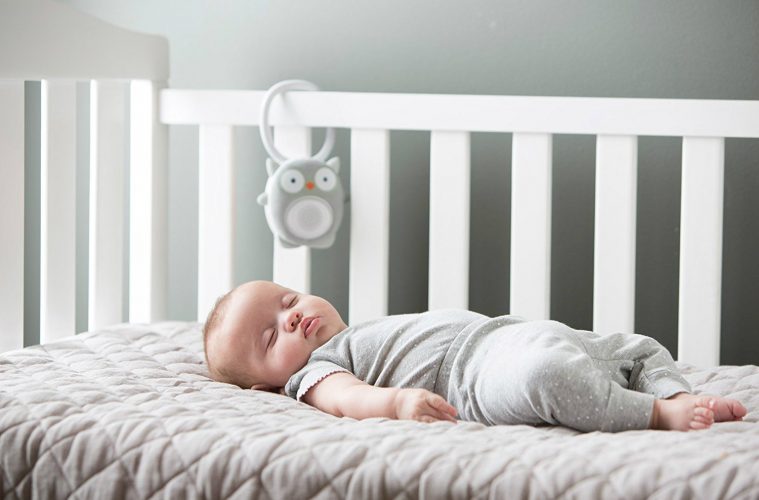
Studies have also shown that swinging or rocking motions are very effective to calm a crying baby and even induce sleep, as it mimics the gentle movements experienced in the womb. Try cradling your baby in your arms and walking around, or you can even use a rocking chair. It helps to swaddle your baby so that they feel an additional sense of security and comfort during this stressful period.
Choose a Bottle That Helps Your Baby Swallow Less Air
Colicky babies tend to have a lot of gas build-up in their tummy because they swallow too much air from crying. When you are bottle-feeding, switch to a 100% vacuum free bottle for air-free feeding to reduce any excessive air. Dr. Brown’s™ Options+™ Anti-Colic Bottle is clinically proven to minimise burping and gas that often make colicky babies uncomfortable. Its patented anti-colic internal vent system reduces uncomfortable gas build-up and aids in digestion for a good night’s sleep.
Designed alongside medical professionals, the breast-like nipple shape offers a more natural bottle-feeding experience and eases the transition from breast to bottle and back again. This uniquely-engineered bottle nipple ensures a steady and natural flow rate that is comfortable for your baby and is specially designed to reduce colic and discomfort.
For more information, visit https://www.drbrownsbaby.com/.
.jpg)
Your baby spent nine months suspended in amniotic fluid so when the journey continues outside of the womb, his body is still learning to adapt. It is natural for some parents to be even unnerved by their precious arrival’s initial appearance, but relax! Of foremost importance is growing in confidence to handle your baby as a new parent, and to do that, you have to be as hands-on as you can.

Continue reading on the next page...
Step by Step Diapering

A newborn baby will soil or wet upwards of at least eight diapers a day, so you will literally have your hands full at the start!
Continue reading on the next page...
Bathing Your Newborn

The umbilical cord stump has fallen off and it is time for your baby’s first bath! Remember to be well prepared and try and minimise bath time to 10 minutes.
 When bath time is over, dry your baby quickly with a towel and clothe him to prevent chills. Some parents use a towel with a hood while dressing baby to keep baby’s head warm as babies lose heat the fastest from the tops of their heads
When bath time is over, dry your baby quickly with a towel and clothe him to prevent chills. Some parents use a towel with a hood while dressing baby to keep baby’s head warm as babies lose heat the fastest from the tops of their heads
If you like this article, share it with your friends!
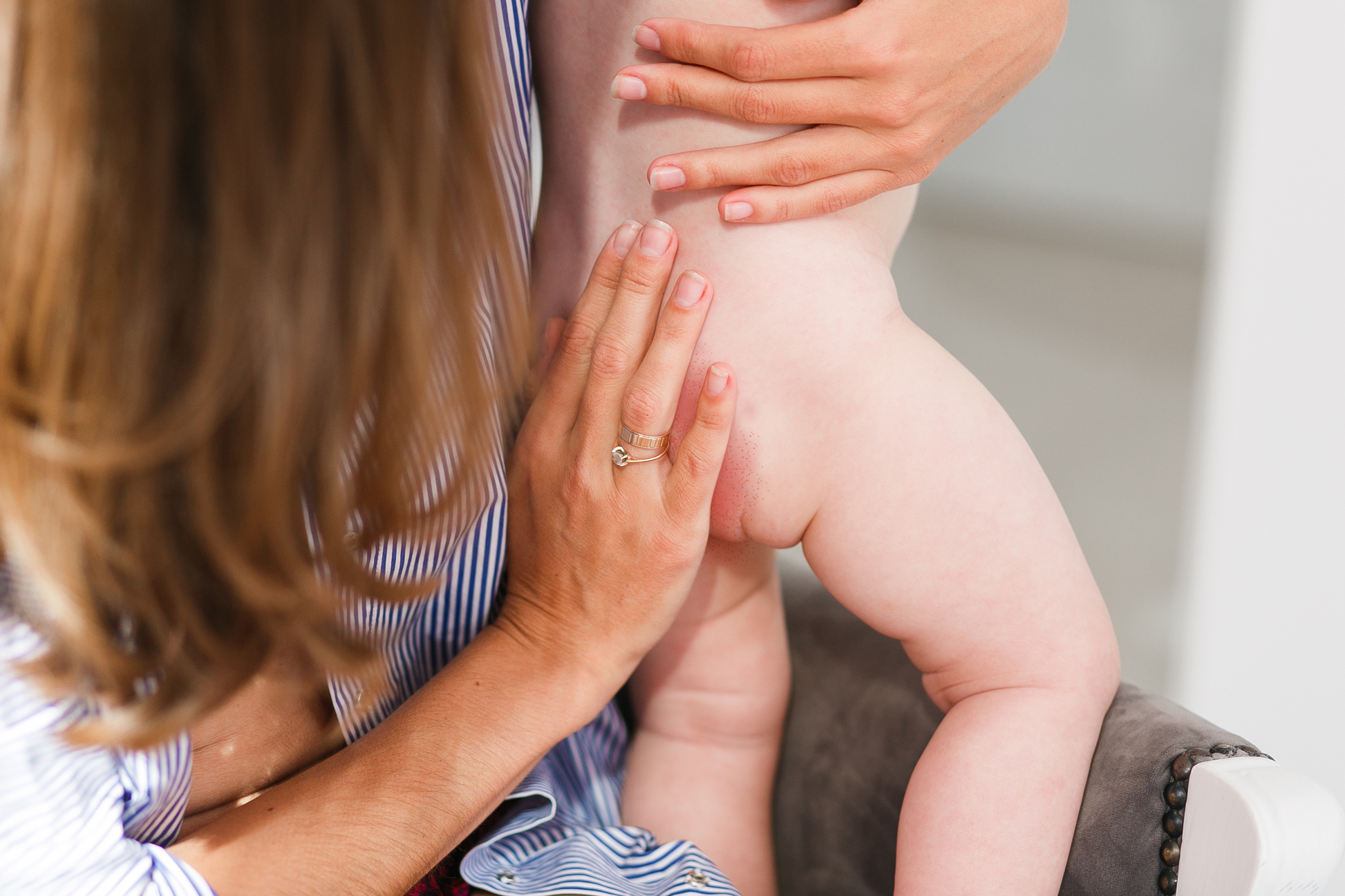
The best remedies to treat and prevent diaper rash
Diaper rash is a skin irritation that occurs when your baby’s bottom is frequently exposed to urine or poop in their diaper. The first sign of diaper rash is red and irritated skin on your baby’s bottom or thigh region. Most diaper rashes are commonly triggered by:
Allergic reaction: Babies with sensitive skin may react to the dyes or synthetic materials in diapers, non-hypoallergenic ingredients in baby wipes, or even certain ingredients in diaper cream.
Moisture build-up: If your baby’s skin is not dry completely before you put on another diaper, the moisture trapped may encourage bacteria growth.
Breathability of diaper: Diaper rash may also sometimes occur if the diaper is too tight, restricting the baby’s movements and causing rough abrasion against your baby’s skin.
Lack of hygiene: Given that newborns poop up to 8 times a day, it is unavoidable that their sensitive skin will come into contact with urine and stool, causing skin irritation to occur. This can be minimised with frequent diaper change – as soon as you notice that the diaper is soiled.
Treating Diaper Rash
Despite your best attempts, diaper rash is extremely common and mummies can expect to battle diaper rash at least once. Fortunately, treating diaper rash is no rocket science, and the most effective treatment only requires a simple tweak to your diaper changing routine.
Once a diaper rash has developed, application of a diaper cream is the best way to soothe and get the rash under control quickly. It is recommended to apply a layer of diaper cream to your baby’s bottom for two reasons.
For effective treatment of diaper rash, choose a diaper cream that is rich in zinc oxide to seal out wetness or moisture, thus allowing the inflammation to heal. As the fragile skin on your baby’s bottom has a weaker skin barrier, it is naturally more prone to secondary infections. Ceradan Diaper Cream contains a 3:1:1 ceramide-dominant ratio of ceramide, cholesterol and free fatty acid to aid in optimal skin barrier repair. It also contains Octenidine, an anti-microbial that controls yeast overgrowth to effectively shield against secondary infections. Ceradan’s unique triple protective action helps to soothe, manage and prevent diaper rash to support and maintain the skin’s natural physiological state.
Preventing Diaper Rash in 5 Easy Steps!
Diaper rash can be troublesome to treat, as it requires frequent diaper changes combined with treatment of the affected area. Learn how you can minimise the risk of diaper rash by incorporating these easy steps into your diaper changing routine!
#1: Change diapers regularly
Prolonged exposure of your baby’s sensitive skin to urine and poop is the most common trigger for diaper rash, so be sure to change diapers often, ideally every 2 hours or so. If your baby already has a diaper rash, it is best to change the diaper as soon as it is soiled to prevent further irritation and secondary infection.
#2: Minimise use of pre-packaged wipes
These wipes tend to contain alcohol or other irritants that trigger diaper rash. Mummies should use a warm, soft washcloth or dampened soft paper towel soaked with cooled boiled water that is gentler on your baby’s fragile skin and effectively removes bacteria. If you must use baby wipes, be sure to check that that is free from any fragrances or alcohol.
#3: Air baby’s bottom for 5 to 10 minutes
In tropical countries like Singapore, prolonged dampness often triggers diaper rash or worsens it. Ensure that the diaper area is fully dry by airing your baby’s bottom for 5 to 10 minutes before putting on a new diaper.
#4: Apply diaper cream as a protection layer
Not only does this function as a protective barrier for your baby’s fragile skin, but it can also effectively treat any affected area as the active ingredient, zinc oxide, works to seals out moisture to allow for effective healing.
#5: Give baby’s bottom more time without a diaper
Giving your baby’s skin time to air is one of the most natural remedies for diaper rash, as the skin is easily irritated with moisture build-up in the diaper. When possible, let your baby go diaper-free for half an hour a day. Lay a mat or a towel on the floor for easy clean up in case of any mess.
Triple Protective Action Against Diaper Rash
When choosing a suitable diaper cream for your baby, take note of these active ingredients that are known to be effective against treating diaper rash and protecting the fragile skin barrier.
Zinc Oxide: seals out moisture and keeps affected area dry 3:1:1 ceramide dominant ratio: Repairs and Strengthens skin barrier.
Octenidine: Anti-microbial that prevents yeast infection & bacteria growth.
Ceradan Diaper Cream has a unique triple-protective action that contains all of the active ingredients above to both manage and prevent diaper rash. This cream is uniquely formulated to be hypoallergenic and enriched with skin physiological lipids (ceramide) for effective maintenance of the skin barrier. Ceradan’s formula also contains zinc oxide that works to repel moisture from the skin to form a protective barrier for healing.
How to apply Ceradan Diaper Cream?

Ceradan Diaper Cream (50g) retails for $17.50 at most Guardian and Watsons pharmacies.

The World Health Organization recommends exclusive breastfeeding for the first 6 months. Thereafter, infants should receive complementary foods with continued breastfeeding up to 2 years of age or beyond.1
When breastfeeding is not possible, infant formula milk becomes an essential alternative to support their growth. Goat milk is growing to become a preferred choice amongst parents when it comes to dairy-based infant formula, as it is easily digestible and less allergenic than cow milk.
What’s In Goat Milk?
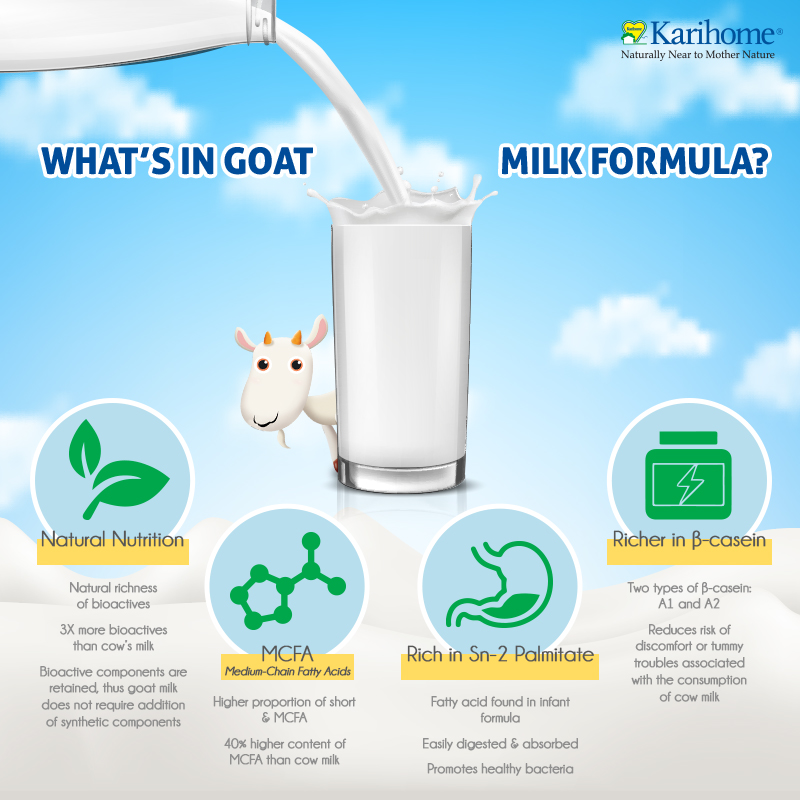
Natural Nutrition
Among the many valuable properties of goat milk is the natural richness of bioactives – essential nutrients that are associated with impressive benefits for infant growth and development. Goat milk contains three times more bio-actives than cow milk, reducing the need to add synthetic supplementation.
Goat milk is also rich in free amino acids which are important for the development of strong bones and iron absorption. A particular amino acid, Taurine, is especially rich in goat milk, amounting to 20 times more than that of cow milk.2
Medium-Chain Fatty Acids (MCFA)
Goat milk has a higher proportion of short and medium-chain fatty acids that are absorbed more rapidly than longer-chain fatty acids found in cow milk. These shorter chains form looser and more porous curds, allowing digestive enzymes easier access to the milk proteins. Some studies show that goat milk has up to 40% higher content of medium-chain fatty acids than cow milk.3
Rich in Sn-2 Palmitate
Sn-2 palmitate (Sn-2 PA) is a fatty acid found in infant formula that mimics the composition and structure of human milk fat, and is produced by an enzymatic reaction on vegetable oils. Goat milk infant formulas like Karihome is rich in Sn-2 PA that are easily digested and prevents calcium soaps formation and hard stools, while promoting more healthy bacteria in the gut.
Richer in β-casein
There are two types of β-casein in milk protein: A1 and A2. The intolerance to lactose is often caused by the presence of allergenic A1 β-casein, producing β-casomorphin-7 (BCM-7) during the process of milk digestion. Goat milk exists mainly as the easily digestible A2 β-casein, reducing the risk of discomfort or tummy troubles associated with the consumption of other milks. 4
Ask The Expert: Goat Milk Formula vs. Cow Milk Formula
With over 30 years of experience in lactation consultancy, Dr Wong shares her thoughts on which milk is best for your child.
Clinically Proven to Provide Growth & Nutritional Outcomes in Infants
Protein Profile
Goat milk has a much lower level of ∝s1-casein than cow milk, making it easily digestible. With lower casein levels, goat milk curds (coagulation of milk) are softer and can be broken down more easily during the digestion process. The casein micelles in goat milk are also 40% larger than those from cow milk, creating more porous curds for the digestive enzymes to aid in more efficient digestion of goat milk protein.3
Infant Stool Characteristics
Studies have evidenced that the frequency of bowel motions of infants in the goat milk-fed infants are similar to that of infants in the breast milk-fed group. The protein profile of goat milk, combined with the richness of A2 β-casein, makes it easily digestible for healthier bowel movements.5
Weight, Length & Head Circumference No Different From Cow Milk-Fed Infants
Clinical studies have proven that goat milk formula provides the same growth and nutritional adequacies as the standard whey-based cow milk formula. The study recorded no difference in the weight, length and head circumference in goat milk-fed infants as compared to cow-milk fed infants.6
From Farm to Table
Powdered goat milk formula is the preferred choice for toddlers and children as contains natural ingredients like MCFA, Sn2-PA and vitamins (A, D, E, K). Karihome manufactures its infant formula with 100% whole goat milk, supplied from 72 dedicated farms around New Zealand. To preserve its natural nutrients and benefits, fresh goat milk is spray-dried at a low temperature to reduce damage to nutrients.
All Karihome formulas are made from the highest quality of goat milk in New Zealand and processed in an ISO 9001 certified factory, where stringent quality checks are made from the collection of milk on-farm to manufacturing and packaging to offer nutritionally complete and safe products for infants and toddlers.
The Naturally Nutritious Choice for Children of All Ages
Goat milk is the preferred choice for infant formula and a great source of nutrition to meet the nutritional needs of growing toddlers and young children. Karihome provides goat milk formulas that have been specially fortified with added nutrients to meet the nutritional needs of each age group.
Karihome Growing-Up Formula (for kids aged 1-3)
900g tin ($53.40)
The natural goodness of Karihome Growing-Up Formula helps to meet the nutritional needs of active toddlers aged 1 to 3 years old.
Karihome Pre-School Formula (for kids aged 3-7)
900g tin ($53.40)
A natural progression from Karihome Growing-Up Formula, with fortified blends of nutrients to meet the nutritional needs of this age group.
Karihome Whole Goat Milk Formula (for kids above 7 years old and adults)
500g tin ($23.00)
This formula is produced from fresh goat milk, from which only water has been removed. The goat milk powder can be reconstituted in water to produce a wholesome and nutritious drink that provides the unique nutritional benefits of goat milk.
Click here for FREE samples: http://mail.karihome.com.sg/req-sample.html?utm_source=facebook&utm_medium=fbad&utm_campaign=samrequest
References:
1http://www.who.int/topics/breastfeeding/en/
2https://www.researchgate.net/publication/261323305_Taurine_-_valuable_component_of_goat_milk
3http://www.academicfoodjournal.com/archive/2015/issue1/RevArticlePages56-60.BHUlusoy.pdf
4https://www.ncbi.nlm.nih.gov/pmc/articles/PMC5932946/
5https://www.ncbi.nlm.nih.gov/pmc/articles/PMC3180681/

Newborn babies have very sensitive skin that is prone to rashes or irritation and requires special care. Learn how to manage these common skin conditions to soothe and protect your baby’s delicate skin.
Sensitive Skin
Babies’ skin is naturally thinner and more delicate, but some have more sensitive skin than others and are prone to allergic reactions or recurring rashes. Irritants like harsh soaps, frequent bathing or air-conditioned environments are common triggers if your baby has sensitive skin.
Signs/Symptoms:
Skincare Tips For Sensitive Skin
#1: Choose A Soap-Free Formula
Strong soaps tend to strip baby’s skin of its natural protective oils, especially antiseptic soaps or bubble baths. A soap-free formula can gently cleanse your baby’s skin without drying it out.
Recommended Product: ABCDerm Moussant Gentle Shower Gel
#2: Wash Instead of Bathe
Long baths can reduce the skin’s natural oils and increase the risk of irritation. Frequent bathing can also dry out your baby’s delicate skin. Limit to one bath per day, and schedule it as part of your baby’s night-time ritual as baths may help some babies fall asleep easier. To prevent heat rash during the day, use a delicate washcloth or towel with a few drops of micellar water to remove sweat and dirt, keeping your baby feeling refreshed.
Recommended Product: ABCDerm H2O Micellar Water
#3: Moisturise After Bath (Especially If Sleeping in Air-Conditioned Room)
Air-conditioned rooms can quickly dehydrate your baby’s delicate skin, especially after a bath. Gently apply a thin layer of baby moisturiser for an added boost of hydration to maintain the moisture level of your baby’s skin. If you notice your baby’s skin is unusually dry, apply moisturiser two to four times a day.
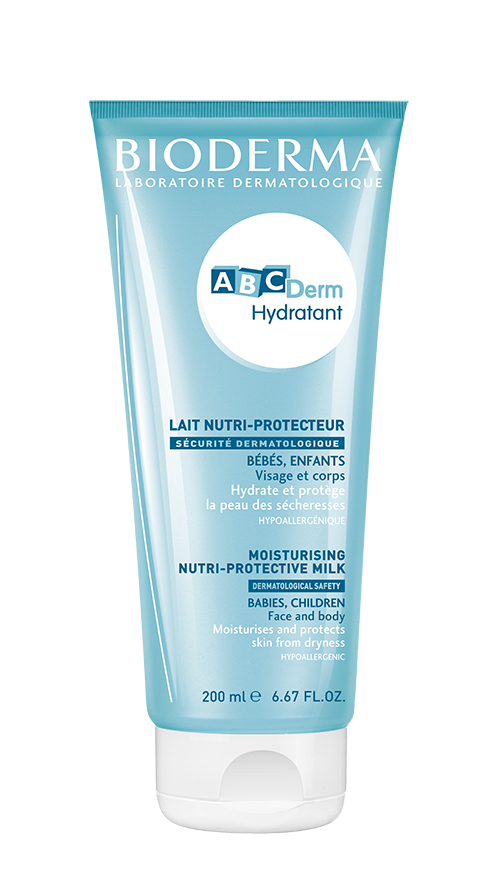
Recommended Product: ABCDerm Hydratant Moisturising Milk
Dry, Eczema-Prone Skin
Dry skin is a permanent skin condition that is characterised by tightness over the entire face and body. This is caused by an abnormality in the skin barrier that produces very little natural oil (sebum).
Signs/Symptoms:
Baby eczema (atopic dermatitis) causes red, itchy patches that usually appear on the face, cheeks, chin and scalp. Babies with very dry skin are highly prone to eczema, due to the unnaturally dry surface of the skin. Eczema may also develop on baby’s elbows and knees between 6 to 12 months of age.
Unfortunately, there is no cure for eczema, and parents are only able to manage the symptoms to minimise skin irritation.
Skincare Tips For Dry, Eczema-Prone Skin
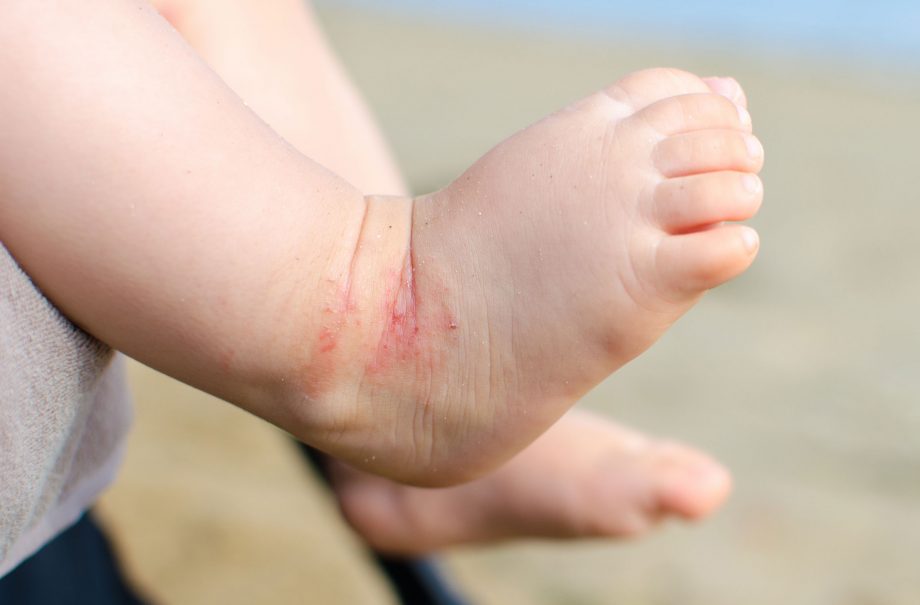
#1: Look for Gentle Formulas that Are Very Moisturising or Hydrating
Since dry skin is already lacking in natural oils, using a strong soap may strip off any remaining oils and worsen the skin condition. Choose a formula that tends to be gentler on the skin. Cleansers that are suitable for both face and body are a good indication that it is gentle enough for your baby’s skin. Formulas that are enriched with oils may also help restore lipids in dry skin, reducing tightness and irritation.
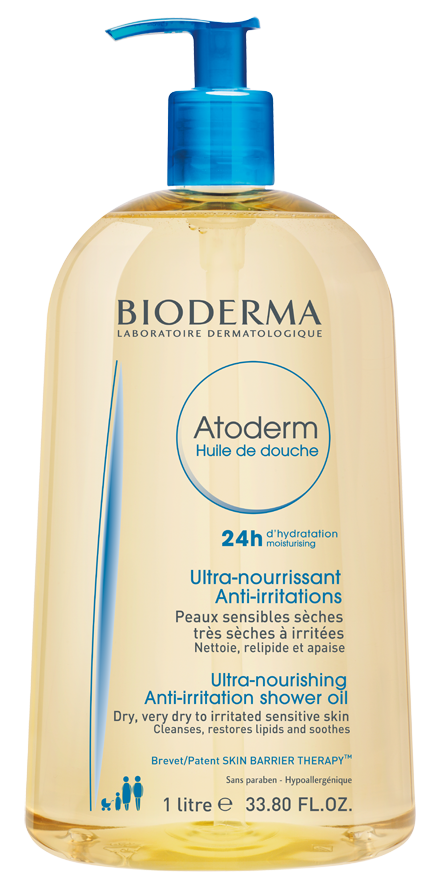
Recommended Product: Bioderma Atoderm Huile De Douche Anti-Irritation Shower Oil
#2: Use Moisturiser After Bath
While bath time removes dirt and grime from the skin, it also severely dries out the skin, especially hot showers. Apply moisturiser immediately after a bath to hydrate and repair the weakened skin barriers to soothe tightness and redness.
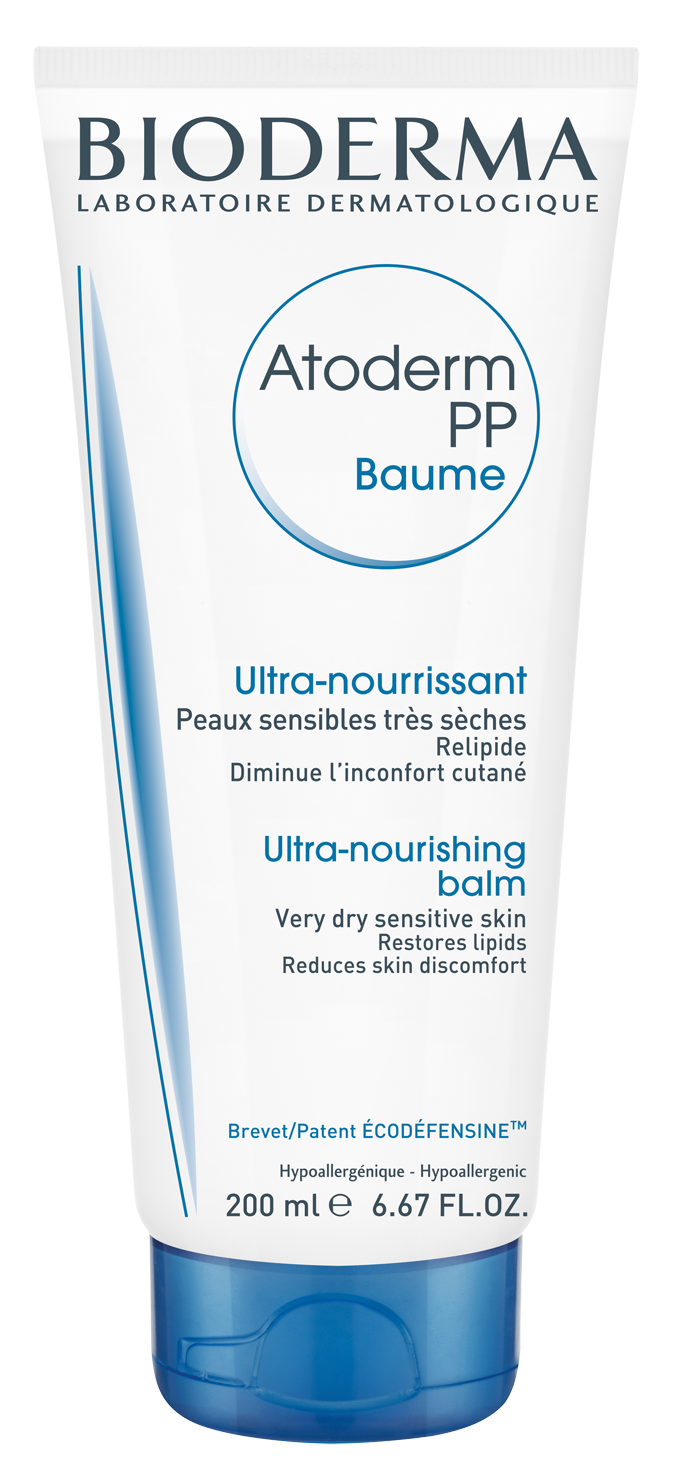
Recommended Product: Bioderma Atoderm PP Baume Ultra-Nourishing Balm
#3: Use Lukewarm Water During Bath
Hot water tends to strip the skin of moisture, which can worsen dry skin. Instead, fill the tub with lukewarm water and limit your baby’s bath time to no longer than 10 minutes. Harsh cleansers are the main triggers when it comes to dry or eczema-prone skin, leading to redness, dryness and irritation. Choose cleansers that are free from paraben, alcohol, soap or colorants as these ingredients are likely to trigger a reaction in those with eczema or sensitive skin conditions.
Recommended Product: Bioderma Atoderm Huile de douche Anti-Irritation Shower Oil

Making the Best Out of Bath Time For Both Mum & Bub!
Bath time is much more than a routine to keep your little ones clean and healthy - did you know that there are amazing benefits to bathing with your baby?
Not only is it a good way to unwind after a long day, developing a bath time ritual with your baby can actually aid in your baby’s development. Read on to discover some of the benefits you can reap from bath time with bub!
Bath Time Contributes to Healthy Brain Development
According to Australian general practitioner, Dr Gianni Mansberg, every second you spend talking and massaging your baby in and out of the bath boosts their sensory development, which improves their brain development.
“Sharing beautiful experiences like bath time and touch time will not only create special moments between parents and their child but it will also improve brain development.”
Bath time is also the only technology-free time where babies have their mother’s undivided attention. Use this time to develop a deeper connection with your little one with a simple baby massage or simply by playing with your baby’s fingers and toes to establish bonds of attachment and trust.
As babies are sensitive to scented soaps, mothers may wish to avoid using their regular body soap which may be too harsh for their baby’s skin. Instead, opt for ABCDerm Gel moussant, a gentle shower gel such as from Bioderma’s baby range that is specially formulated to cleanse and keep babies and children’s skin healthy.
For mummies who have dry skin, you can try a ultra-gentle shower oil cleanser like Bioderma’s Atoderm Huile de douche, which is formulated to treat dry and sensitive skin prone to itch or irritation. Best of all, this shower oil is so gentle that it is suitable for both mother and baby.
A Multi-Sensory Experience for Your Baby
Bath time engages multiple senses in your little one - like their sense of touch from playing with bubbles or sense of hearing from listening to the sounds of splashing water. Your baby’s brain will be highly engaged during this multi-sensory stimulation.
Bath time is also significant for babies as they experience their mother’s touch more than any other time during the day, and mothers will also pay more attention to sensitive areas like their babies’ delicate hair and scalp.
Many newborns are also prone to cradle cap, a form of baby dandruff which is common and harmless. Soothe these rough and scaly patches with a baby shampoo like ABCDerm Shampoo to wash away excess oils. Developed in accordance with an exclusive, stringent ABCDerm formulation charter, it is formulated for delicate hair and baby’s scalp. Gently massage onto baby’s scalp until brow area while avoiding the eyes, and wash with lukewarm water.
Deeper Sleep for Mum and Bub
Babies are found to cry less and fall into a deeper sleep after a scented bath. Having an aroma in the bath is especially helpful for both mother and baby to relax.
Simply dilute and add a few drops of essential oils to your bath. Most essential oils are safe for baby’s skin and certain essential oils like chamomile or lavender have properties to induce quality sleep.
Introducing bath time as part of a bedtime routine helps both mother and baby to wind down from a long day, by transitioning into a relaxed mode to encourage deeper sleep.
How Often Should I Bathe My Baby?
While bath time is great for bonding with your little ones, they don’t need a daily bath as their skin is sensitive. Sometimes a quick cleanse is all your little one needs to effectively combat sweat and grime from Singapore’s humid climate.
You can also sneak in some quality bonding time by singing or talking to your little ones while cleansing. Effortlessly wipe and cleanse your little one using a damp cloth with a hypoallergenic and moisturizing solution like ABCDerm H2O micellar water, paying attention to the delicate and sensitive skin areas, leaving your little ones feeling refreshed and comfortable.
The Bioderma range for babies is available exclusively at Bove by Spring Maternity, selected Guardian stores, Robinsons, Mothercare – Paragon, Habourfront, Marina Square, KK Hospital, and 1010 Mother & Child Essentials.

Pregnancy and Baby Singapore provides you with the latest news and practical tips to help you in your parenting journey. For more tips on your pregnancy and baby in Singapore, subscribe to our mailing list and like us on Facebook, to receive new articles for mummies like you every week!

The World Health Organisation recommends exclusive breastfeeding for the first 6 months. In circumstances where breastfeeding may not be possible, infant formula is the next best alternative.
There are countless choices in the market, and each claim to include the best ingredients in their products. This makes understanding the differences between brands and choosing the right infant formula for your child a challenging proposition.
While most parents would focus on the amount of DHA and ARA in infant formula brands, few stop to consider what forms the bulk of infant formula – the milk (or lack thereof)!
Look into the ingredients list of most infant or toddler formula milk brands available in the Singapore market, and it is not uncommon to find skimmed milk or whey listed as the first ingredient, indicating that they are present in order of higher percentages than the other ingredients in the formula milk. What is skimmed milk and whey, and why do the various infant formula brands use these ingredients as the base ingredient in their formula milk?
Skimmed milk is made by removing the natural milk fats from whole milk (also known as full cream milk). By removing the natural milk fats from whole milk, skimmed milk contains little to no fat. In addition, vitamins such as Vitamin A and Vitamin D that are fat-soluble are also lost due to the removal of the natural milk fats and must be added back into the skimmed milk after the skimming process. Natural whole milk contains two types of naturally occurring proteins; casein and whey. To make whey, the casein proteins and natural milk fats are removed from whole milk.
Most infant formula brands use skimmed milk or whey as the base ingredient as both ingredients are cheaper than natural whole milk. However, since skimmed milk and whey contain almost no fat, which is essential for growth and development, most of the fat in infant formula is derived from vegetable oils, and the 5 most common types that are used are palm oil, soy, coconut, safflower, and sunflower.
Unfortunately, most infant formula brands choose palm oil as the primary fat source (the first vegetable fat) due to its low cost and the palmitic acid found within.
Being cheap and relatively easy to grow, the cultivation of palm oil has led to detrimental impacts on the environment. Not only is it a leading contributor to deforestation and wildlife displacement on a massive scale, but this oil may also have harmful effects on your child.
One of the negative effects of palm oil for children is constipation. Palm oil has been shown to combine with calcium to form hard, insoluble soaps in your child’s sensitive digestion system, which in turn leads to constipation with all the associated symptoms such as pain, lack of appetite and, of course, disrupted sleep for your child. Research has shown that babies who drink formulas without palm oil have softer stools, like that of breastfed babies.
A further problem brought on by palm oil is that it has the potential to impede your child’s development in the long run. Palm oil used in infant formula has been found to inhibit the natural increase in bone mass and bone mineral density in infants. 1
Other common ingredients used in formula milk include Corn Starch, Glucose, Sucrose and Corn Syrup. These ingredients are cheap and serve useful purposes from the manufacturer’s point of view, such as being a source of easy-to-digest carbohydrates, as a sweetener or helping to thicken the milk formula. In addition, most Corn Starch, Glucose and Corn Syrup are made from GMO corn.
Corn Starch is commonly added as a source of carbohydrates and as a thickener for infant formula. It is also used to keep your baby feeling fuller for longer, as corn starch is a complex carbohydrate that is harder to digest than sugars.
Glucose and sucrose are simple sugars that are commonly made from the starches in corn and sugar cane. Corn syrup is produced in a similar way to how corn-based glucose syrup is produced. Glucose and Corn Syrup are also much sweeter than Lactose, which is a naturally occurring sugar in breastmilk and cow’s milk.
While breastfeeding is regarded as the best food for infants, it is not always possible for a variety of reasons. Infant formulas provide a suitable alternative. While all the infant formulas sold in Singapore meet the Agri-Veterinary Authority’s (AVA) strict food safety standards and the nutritional needs of infants and young children, it is still extremely important for parents to be vigilant when it comes to the ingredients used in infant formulas today. There is definitely a reason why all infant formulas vary in ingredient composition even though they all meet AVA’s strict requirements.
A good option to consider is Britain’s Kendamil, which uses high quality full cream milk sourced from the farms based in Cumbria and Lancashire, contains no palm oil, fish oil or GMOs and are made and packaged entirely in Britain with the highest food manufacturing and safety standards.
Made with Full Cream Milk that contains natural milk fats, Kendamil Infant Formulas contain less vegetable oils than other brands, which require substantial amounts of vegetable oil to provide the required amount of fat. Additionally, Kendamil also entirely avoids the use of Palm Oil in its formula, advocating against the detrimental impact on infant development and for protecting the environment. Kendamil fortifies its milk with Omega 3 Fatty Acids from Pure Marine Algae instead of Fish Oil, making its formula free of fish and suitable for vegetarians as well!
Kendamil’s Infant Formulas are also made without GMOs and has no added corn starch, glucose or corn syrup, relying on the natural sweetness of full cream milk and the lactose found naturally to provide a rich creamy taste.
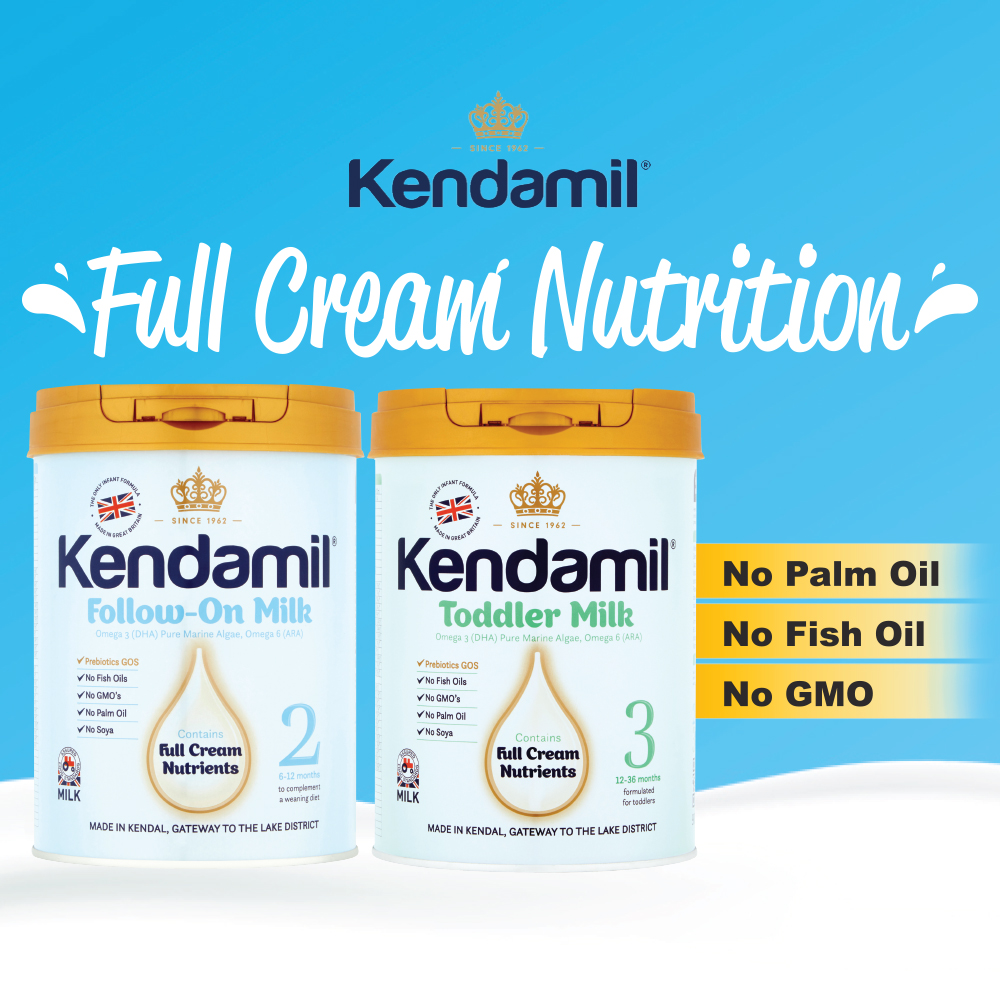
References:
Pregnancy and Baby Singapore provides you with the latest news and practical tips to help you in your parenting journey. For more tips on your pregnancy and baby in Singapore, subscribe to our mailing list and like us on Facebook, to receive new articles for mummies like you every week!

There's actually no need to give your newborn a bath every day. Three times a week might be enough until your baby becomes more mobile. Bathing your baby too much can dry out his or her skin. If you're quick and thorough with diaper changes and burp cloths, you're already cleaning the parts that need attention — the face, neck and diaper area.
Instead of bathing your baby, wipe and cleanse her using a damp cloth, paying attention to the delicate and sensitive skin areas!
ABCDerm range of products is specially formulated to suit the delicate skin needs of babies. The H2O Micello solution for newborn and children not only cleanses, but soothes and provides immediate sense of freshness to the skin too!
The H2P Micello solution is incredibly simple to use! Just soak a cotton pad, washcloth or even a wet wipe and get started!
Here are the areas to take note of and how to clean it:
1. Face
Wipe baby’s forehead, nose, cheeks and chin gently. Do not scrub or rub her delicate skin!
2. Eyes
Gently wipe baby’s eyes from the inside corner, near her nose, to the outside corner. If she has dried matter around her eyes, pat the area with the cotton pad, and then gently wipe it away.
3. Behind the ear
Gently cleanse the back of baby’s ear and the outer parts of the eat with the soaked cotton pad. Do not attempt to put your finger or a cotton swab into baby’s ear to remove the earwax!
4. Neck folds
This area often gets easily irritated as baby drools and perspires. To cleanse, simply lift baby’s chin up gently and wipe her neck.
5. Nappy area
After wiping baby’s poo, use a cotton pad soaked with ABCDerma H2O and lightly wipe the nappy area. Finish off by drying it with a washcloth and applying your nappy cream.
Boys: Clean the urinary area first. Wipe under the testicles and in between the creases, especially between the thighs. Wipe the anus area last.
Girls: Always wipe from front to back to prevent any urinary tract infection. Ensure that all poo inside the labia is removed thoroughly.
Tip! Ensure that the cotton pad is sufficiently moist and use a new piece of cotton pad for each area!
Find out more on ABCDerma range of products here!
Pregnancy and Baby Singapore provides you with the latest news and practical tips to help you in your parenting journey. For more tips on your pregnancy and baby in Singapore, subscribe to our mailing list and like us on Facebook, to receive new articles for mummies like you every week!
Copyrighted Pregnancy & Baby by Mummys Market 2019
